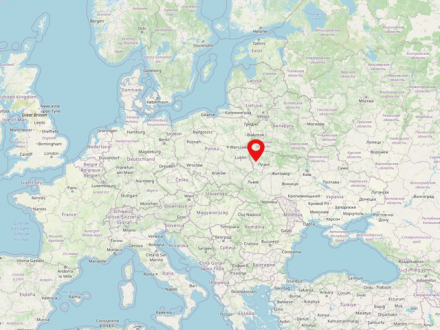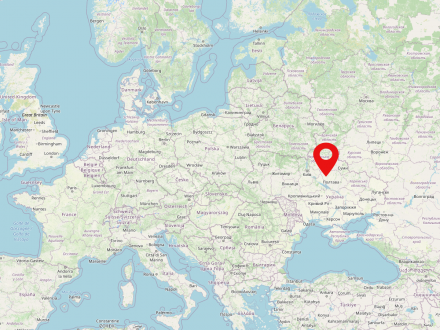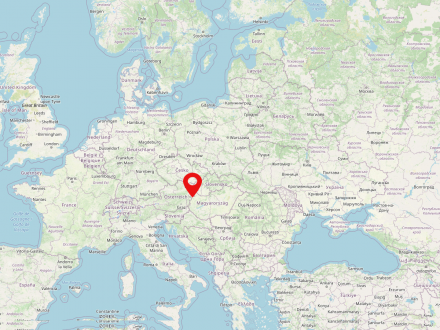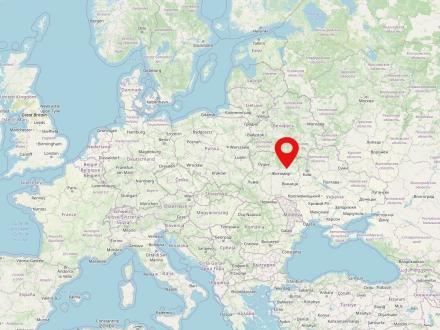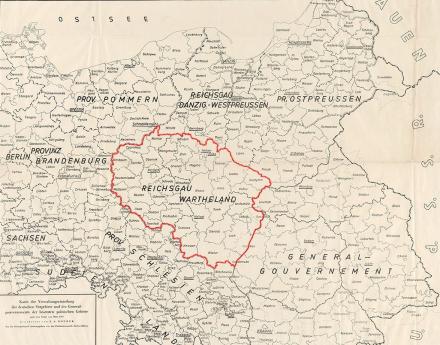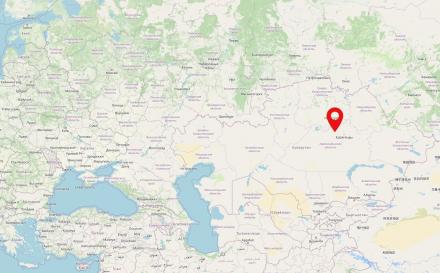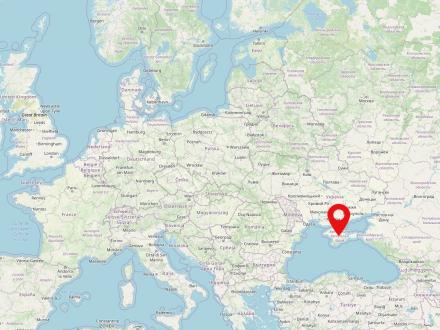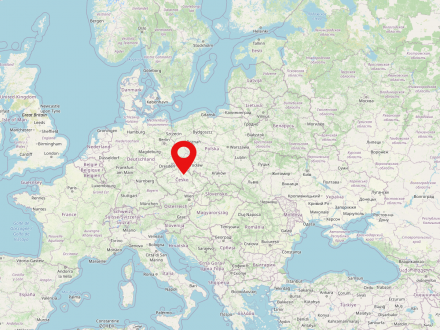The historical landscape of Volhynia is located in northwestern Ukraine on the border with Poland and Belarus. Already in the late Middle Ages the region fell to the Grand Duchy of Lithuania and from 1569 on belonged to the united Polish-Lithuanian noble republic for more than two centuries. After the partitions of Poland-Lithuania at the end of the 18th century, the region came under the Russian Empire and became the name of the Volhynia Governorate, which lasted until the early 20th century. The Russian period also saw the immigration of German-speaking population (the so-called Volhyniendeutsche), which peaked in the second half of the 19th century. After the First World War Volhynia was divided between Poland and the Ukrainian Soviet Republic, from 1939, as a result of the Hitler-Stalin Pact, completely Soviet and already in 1941 occupied by the Wehrmacht. Under German occupation there was systematic persecution and murder of the Jewish population as well as other parts of the population.
After World War II, Volhynia again belonged to the Ukrainian Soviet Socialist Republic and since 1992 to Ukraine. The landscape gives its name to the present-day Ukrainian oblast with its capital Luzk (ukr. Луцьк), which is not exactly congruent.
Ukraine is a country in eastern Europe inhabited by about 42 million people. Kiev is the capital and also the greatest city of Ukraine. The country has been independent since 1991. The Dnieper River is the longest river in Ukraine.
The principality of Galicia-Volhynia was formed around 1200 as an independent part of Kyiv Rus'. It continued to exist beyond the Mongol expansion as an independent political dominion until the 14th century.
The territory of the Grand Duchy of Lithuania was settled by Baltic Lithuanians as early as the 11th century. These different "tribes" formed the Grand Duchy in the 13th century. The expansion of the Grand Duchy was mostly positioned to the east, as the Teutonic Order blocked the access to the Baltic Sea from the 13th century. In 1320, Grand Duke Gediminas conquered Kiev. From 1386, the Grand Duchy was under the same ruler as the Polish Kingdom (personal union) in order to be able to assert itself against the strengthening Teutonic Order in the region. In 1569, Poland and the Grand Duchy of Lithuania also became unified states.
As early as 1386, the Kingdom of Poland and the Grand Duchy of Lithuania were united by a personal union. Poland-Lithuania existed as a multi-ethnic state and a great power in Eastern Europe from 1569 to 1795. In the state, also called Rzeczpospolita, the king was elected by the nobles.
The Russian Empire (also Russian Empire or Empire of Russia) was a state that existed from 1721 to 1917 in Eastern Europe, Central Asia and North America. The country was the largest contiguous empire in modern history in the mid-19th century. It was dissolved after the February Revolution in 1917. The state was regarded as autocratically ruled and was inhabited by about 181 million people.
When Russia abolished serfdom in 1861, there was a labor shortage in Volhynia, which was under Russian rulership. To remedy it, permission was given for German and Czech colonies to be established. Moreover, as a punishment for their participation in the January Uprising of 1863/64, Polish landowners were expropriated, which freed up cheap land. For these reasons Czechs also began to immigrate from the crown land of
Bohemia is a historical landscape in present-day Czech Republic. Together with Moravia and the Czech part of Silesia, the landscape forms the present territory of the Czech Republic. Nowadays, almost 6.5 million people live in the region. The capital of Bohemia is Prague.
Austria-Hungary (Hungarian: Osztrák-Magyar Monarchia), also known as Imperial and Royal Hungary Monarchy, was a historical state in Central and Southeastern Europe that existed from 1867 to 1918.
While the reform-minded Russian emperor Alexander II had welcomed immigrants as economic innovators, his successor Alexander III restricted them again. In the 1880s, the German population in Volhynia increased due to the immigration of large numbers of impoverished peasants from Poland and high rates of childbirth, and their land holdings expanded accordingly. On the other hand, there was a large number of impoverished Russian peasants who had not learned to farm their own land productively during the years of serfdom. Beginning in the late 1880s, the tsar introduced laws prohibiting foreigners from acquiring or leasing land and restricting the inheritance of existing land holdings. The legislation became so stringent that even persons with Russian citizenship but of foreign origin were prohibited from acquiring land. The only exceptions were granted to those who converted to the Orthodox faith, which around 75 percent of the Volhynia Czechs then did. Previously, most of them had followed the Catholic faith, like the Poles, and had therefore been discriminated against.
Long-existing lease and purchase contracts were invalidated or often renewed on bad terms for the Volhynian Germans. As a result, many of them suffered hardship and had to abandon their colonies. About 30,000 emigrated to North and South America, mainly to Brazil. Nevertheless, by 1897, their share of the population in Volhynia had grown to 5.7 percent. Volhynian Czechs accounted for 0.9 percent. Ukrainians made up 70 percent, Jews 13.2 percent, and Poles 6.1 percent of the population. Due to the continuously high birth rate, the proportion of Germans in Volhynia continued to rise until World War I, partly because the strict legal restrictions on land acquisition had in the meantime been relaxed again and purchase permits had increasingly been issued. The war had different effects on the two minority groups. While the Volhynian Czechs, as Slavs, were allowed to form their own military units, the approximately 200,000 Germans were treated as possible enemies and evacuated to
Siberia covers an area of 12.8 million square kilometers between the Urals, the Pacific Ocean, the North Polar Sea, China and Mongolia.The Russian conquest of Siberia began in 1581/82. At the time of the Enlightenment mainly a source of raw materials and space for trade with Asia, Siberia gained importance from the 19th century as a place for penal colonies and exiles. With the development of the Trans-Siberian Railway and steam navigation at the end of the 19th century, industrialization and thus new settlers came to Siberia. Further industrialization under Stalin was implemented primarily with the labor of Gulag prisoners and prisoners of war.
The map shows North Asia, centrally located Siberia. CIA World Factbook, edited by Veliath (2006) and Ulamm (2008). CC0 1.0.
With the beginning of World War II, the situation for the two minorities was very different: after Hitler and Stalin divided Poland between themselves on the basis of the Secret Additional Protocol to the German-Soviet Non-Aggression Pact of 1939, the German Reich settled the Volhynia Germans in the Polish territories it occupied on the farms of the expelled native population. In the winter of 1939/40, about 66,400 Germans from the former Polish Volhynia were resettled by rail or made long treks to their new home. They were housed mainly in the "
The Reichsgau Wartheland, also known as Warthegau, was a Nazi administrative district in occupied Poland that existed from 1939 to 1945. The Reichsgau was in large parts congruent with the historical landscape of Wielkopolska and had 4.5 million inhabitants. The capital was today's Poznań.
The almost six-year occupation period was characterized by the brutal persecution and murder of the Polish and Jewish population on the one hand and the targeted resettlement of German-speaking parts of the population on the other.
Image: „Map of the administrative division of the German Eastern Territories and the General Government of the occupied Polish territories as of March 1940“. Herder Institute for Historical Research on East Central Europe – Institute of the Leibniz Association, map collection, inventory no. K 32 II L 43, edited by Copernico (2022). CC0 1.0.
Kazakhstan today is a landlocked Central Asian country located between Russia, China, Kyrgyzstan, Uzbekistan and Turkmenistan. In the past, the region was ruled by various steppe peoples until the Kazakhs subordinated themselves to the Russian Tsarist Empire in several steps between 1731 and 1742. From 1936, Kazakhstan was part of the Soviet Union as the Kazakh SSR; since its disintegration in 1991, Kazakhstan has been independent.
About 40,000 Volhynia Czechs were "repatriated" shortly after 1945 and often settled in areas of
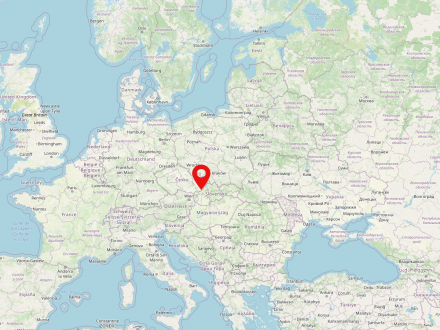
Czechoslovakia was a state existing between 1918 and 1992 with changing borders and under changing names and political systems, the former parts of which were absorbed into the present-day states of the Czech Republic, Slovakia and Ukraine (Carpathian Ukraine, already occupied by Hungary in 1939, from 1945 to the Soviet Union). After 1945, Czechoslovakia was under the political influence of the Soviet Union, was part of the so-called Eastern Bloc as a satellite state, and from 1955 was a member of the Warsaw Pact. Between 1960 and 1990, the communist country's official name was Czechoslovak Socialist Republic (abbreviated ČSSR). The democratic political change was initiated in 1989 with the Velvet Revolution and resulted in the establishment of the independent Czech and Slovak republics in 1992.
Chornobyl, which was first mentioned in writing in 1193, is located in Ukraine, 15 km southwest of the border with Belarus. The town gained tragic notoriety after the reactor accident in May 1986. Chornobyl was permanently evacuated due to radioactive contamination.
Due to the war in Ukraine, it is possible that this information is no longer up to date.
Crimea is a peninsula separating the Black Sea from the Sea of Azov. It is inhabited by nearly 2.3 million people. The capital is Sevastopol. The island is largely inhabited by Russian-speaking populations. Its status has been disputed under international law since 2014.
The Czech Republic is a country in Central Europe with a population of about 10.5 million people. The capital and largest city of the country is Prague. In the Czech Republic lie the historical landscapes of Bohemia, Moravia and parts of Silesia. In 1918 the state of Czechoslovakia was formed, but the Czech Republic was not founded until 1993. The country has been a member of the EU since 01.05.2004.



